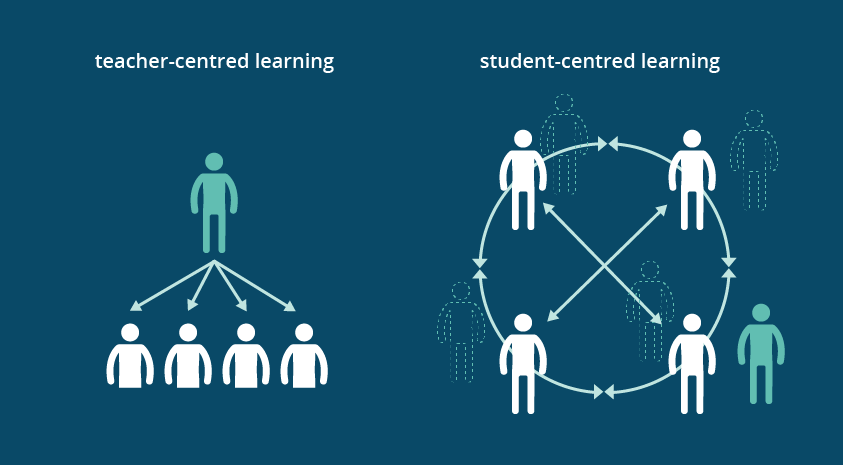
Education is not the filling of a pail, but the lighting of a fire.
William Butler Yeats
The greatest sign of success for a teacher... is to be able to say, “The children are now working as if I did not exist.
Maria Montessori
Learning is not the product of teaching. Learning is the product of the activity of learners.
John Holt
The online learning experience doesn’t have to be an isolating endeavour.
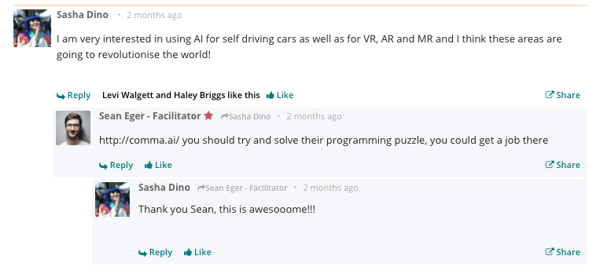
The beauty of online teaching platforms is that they enable people from a wide range of diverse backgrounds and experiences to come together, share their ideas and gather new perspectives.
The challenge is making sure all learners can have their unique voices heard, are able to engage with the content and can consider the differing perspectives to build a richer, more layered understanding.
In this case, having the support and guidance of an inclusive and enthusiastic facilitator can make all the difference!
Learning works best when learners can interact with others to discuss ideas, exchange their understanding and solve problems.
Facilitators can promote discussion by recognising learning opportunities and asking questions that invite a range of possible answers and encourage learners’ curiosity.
Facilitators can show learners what it means to have an active and inquisitive mind by taking part in the learning activities with them and making their thought processes explicit.
Instead of providing answers, facilitators ask guiding questions to help learners clarify any misconceptions, encourage them to engage in higher- order thinking and seek further understanding.
In facilitation, it’s not about what you know, it’s about supporting learners through the process of learning discovery: helping them to form ideas and connect new concepts with existing ones.
Facilitators gradually provide more space and opportunities for learners to share their own ideas, discuss amongst their peers and make their own conclusions. Over time, learners will learn how to support each other and manage their own learning outcomes.
Learner disengagement usually occurs when a learner does not find the material relevant or feel they are not supported in the learning process.
Facilitators can prevent this by highlighting ways for learners to connect the material with their own world, tailoring their questioning to meet learners’ needs and encouraging conversation that is open to anyone without the fear of getting it right or wrong.
There’s a big difference between ‘Welcome to the course’ vs. ‘Hi everyone, we’re so glad to have you join us in this course.’
The positive language used by a friendly and supportive facilitator will help learners feel more welcomed and valued in the course. They know they are engaging with real people, not just a computer screen, and are more like to build rapport with other learners online.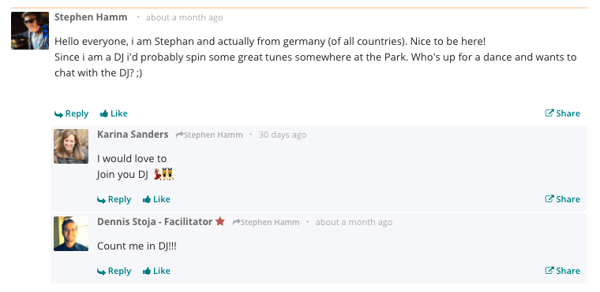
By nurturing a sense of community, modelling good learning practices, and empowering learners to take control of their own learning, a facilitator can have a positive impact on the online learning experience. As a result, learner attitudes shift from having to learn to wanting to learn.
There are several ways to facilitate an online course and build a thriving community on OpenLearning.
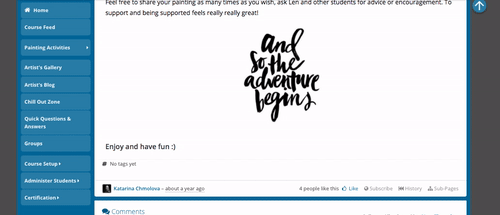
No one wants to be the first person at the party so get this ‘party started’ by seeding the community before the course starts.
Seeding refers to creating the first talking points, completing some activities and sharing your ideas (like planting seeds) so that when learners first enter the course, there is already plenty of activity for them to get involved.
This is also when you should be setting expectations and modelling ideal responses so learners know what type of responses they should be contributing.
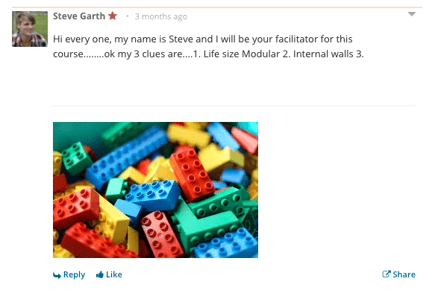
In the early stages of a course, it’s up to you to ensure that learners’ contributions are being valued and heard.
Particularly for the first two weeks, you should have a strong online presence, posting and commenting or ‘liking’ learners’ posts, to welcome them into the course and offer positive reinforcement.

The language you use in your interactions is very important. Using a tone that is relaxed, friendly and positive will help to create an environment where learners feel comfortable to share their ideas, ask questions and discuss freely without judgement. This will also help with promoting peer-to-peer interaction.
With the right environment, learners will start turning to each other for help and support. You can also boost this by doing the following:
Engage rather than tell: When complex questions arise within the community, don’t provide the answer immediately. Instead, suggest ways for learners to find the answers for themselves or involve peer-to-peer discussion, feedback and collaboration.
Know when to step back: Provide time and opportunities for other learners to answer each others’ queries or provide assistance. Over time, learners will learn to take greater ownership for the learning community and become more involved without depending on your guidance.
Maintain your presence by continuing to like learners’ comments and posts, along with a few key comments and replies!
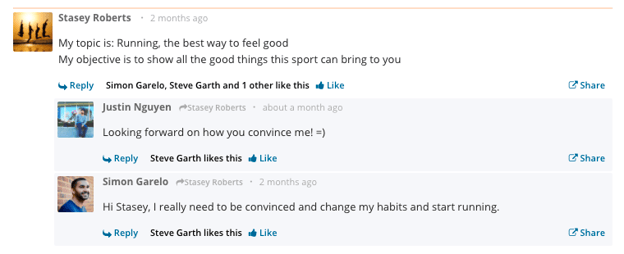
Aim to spend an hour each day on the platform, going through the pages and liking or commenting on learners’ posts. Check your notifications for interactions that need responding to and have fun engaging with the community.
You can also observe and manage community engagement using the following tools:
In the Navigation Bar, click Administer learners > learners to see a percentage of the course completed by each learner. This can help you locate areas where further support might be needed.
You can find Analytics also under Administer learners. This page offers more detailed information on learner engagement such as:
You can filter the data to Pages, learners or Comments.
Creating announcements will send an email and a notification to all learners in the cohort. This is great for staying in touch with learners on a regular basis, reminding them of approaching deadlines as well as sharing upcoming topics in the course.
Moderating learners’ posts: If necessary, you can also report inappropriate comments and flag spoilers. Flagging comments as spoilers hides the comment and gives learners the option to reveal it manually. Reporting comments as inappropriate or disliking comments will hide the comment from the community.
You can find these options under the drop down menu located in the top right hand corner of any comment.
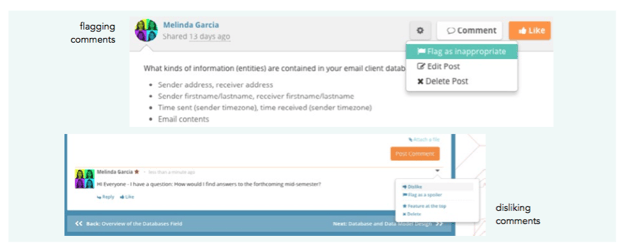
As the community becomes more active and more self-directed, learning will take place organically. At this point, enjoy watching the community encourage each other’s learning!
You can stay on hand to provide extra support when necessary and continue to maintain the rapport and connections you’ve made with learners throughout the course.
OpenLearning is an online learning platform that focuses on learner empowerment, authentic, active learning experiences, and community and connectedness. Facilitation is such an important part of this focus, that we built a whole course on it! ➡️ Click here to enrol in our free online facilitation training course, 'Facilitating for Success'.
This article was first published on March 9, 2017. It has been revised for clarity and ease of reading.
